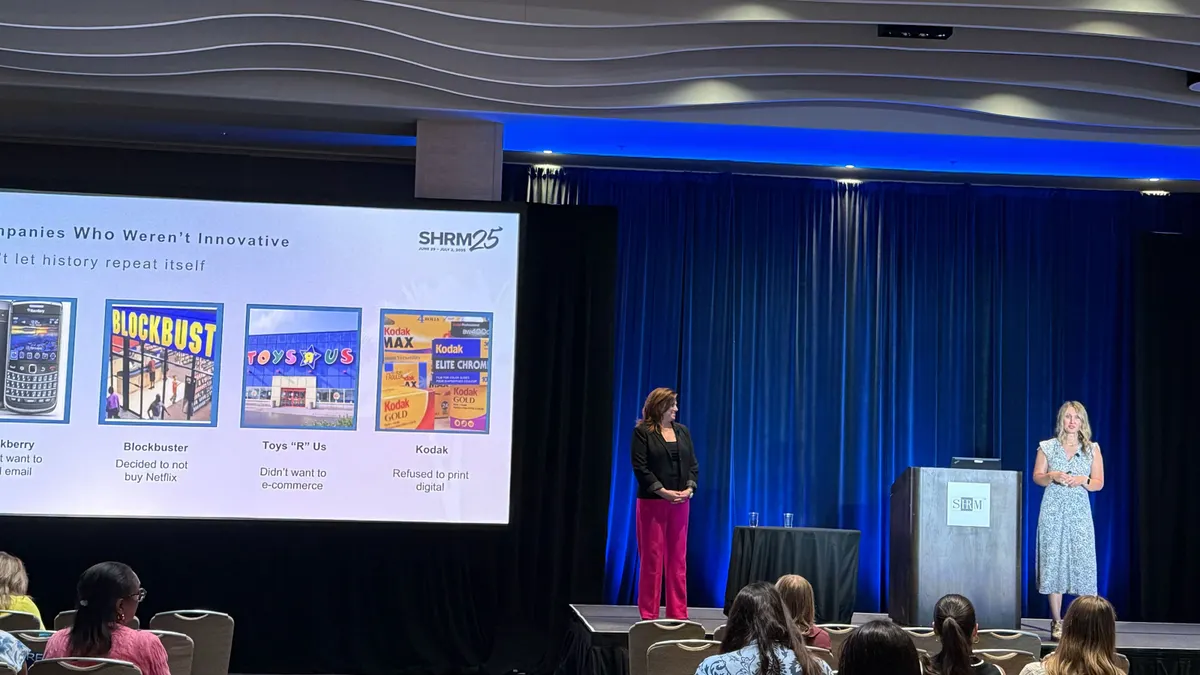In mid-April, Indeed — one of the biggest job sites in the world — announced a shift in its pricing strategy.
But in reality, the announcement was more a clarification of a policy introduced in October, featuring some backtracking after heavy criticism from some clients, according to stakeholders who spoke to HR Dive.
Indeed announced around October 2022 that it would shift clients to a pay-per-application model, away from the classic pay-per-click process that cemented Indeed as an industry leader. But then, smaller businesses unprepared for that change were walloped with unexpectedly high costs, Peter Zollman, founding principal of AIM Group, a business intelligence firm, told HR Dive. Businesses accustomed to prices in the low hundreds for an ad were suddenly billed thousands due to misunderstandings around the model.
“Pay per apply is a logical step forward and Indeed took that step but really handled it very badly,” Zollman said. “They’ve admitted that, to their great credit.”
Despite the hiccups, the pricing change may reflect the future of recruiting as employers seek out ways to land better hires in an increasingly tough market.
What happened?
Raj Mukherjee, general manager and executive vice president of Employer at Indeed, told HR Dive that the company could have done a better job explaining the new model to clients.
“I personally think people didn’t understand what we meant,” Mukherjee said.
Upon rollout, customers could create the job ad, choose their options — and then get hundreds of applications in a small amount of time. While clients have 72 hours to reject applications and not pay for them, many small businesses don’t have a dedicated HR person who can manage that application load, leading to “a very bad impression,” Mukherjee said.
Indeed now offers a cap on pending charges, so that if an ad hits a certain dollar amount of applications, it will no longer receive new ones until approved by the employer. That move satisfied “a large part of our customer base,” Muhkerjee said.
Pay per click is also still an option for smaller employers, both new and established clients, Muhkerjee said. For larger employers, pay per started application is an option, as well, Indeed said.
Still, the clunky rollout may remain a blemish on Indeed’s brand. “Unfortunately, it pretty badly damaged their reputation,” Zollman said. “Presumably, having been burned once, Indeed will do a much better job of explaining pay per apply.”
Indeed said it plans to do just that. “User experience is what clients need,” Muhkerjee said, especially transparency around the options available. Indeed’s website has since been updated so that employers can more clearly understand their options, Muhkerjee said.
Why pay per apply?
Both Muhkerjee and Zollman noted that pay per application is likely the future of the industry — and both said it has yet to reach its true potential.
While pay per click differentiated Indeed in the market early on, clients increasingly want their vendor to have “more skin in the game,” Muhkerjee said. In a pay-per-click model, the job board has little incentive outside getting applicants to click. In a pay-per-application model, the job board has more reason to make the application-to-hire process seamless and engaging, Muhkerjee explained.
“If I am using Indeed as a way to get leads, pay per click or pay per started application works,” he said. But for those who lean on Indeed to find hires, a pay scheme that reflects that investment by the partner company may be what those employers are looking for. “That’s the direction longer term.”
The market as it stands makes the dream of sole reliance on pay per application — and, far in the future, pay per hire — somewhat unattainable, Zollman said.
“Pay per apply just makes sense from the standpoint of fewer applications but better matches,” he said. But no job board can really do that just yet — on top of the fact that HR managers aren’t primed for that reality.
“In the unreal world, the job ad would produce one applicant,” Zollman said. “Now, HR people are conditioned that they have to go through lots of resumes for lots of reasons, because even if the perfect candidate is on the first resume,” the instinct is to instead look for more potentials rather than simply settle, he added.
Over time, HR managers and recruiters could be trained for such a reality. “It’s logical that as the industry gets better matching and fewer bad, useless applications” that pay-per-apply will make more sense for more employers, Zollman said.
Indeed’s clients have said they like the concept of paying for results, Muhkerjee said — but the key is that they need to understand what that means first, he noted.
“We have made mistakes in this journey … that always leads to some battle scars,” he said. “We are constantly listening to customer feedback.”





















